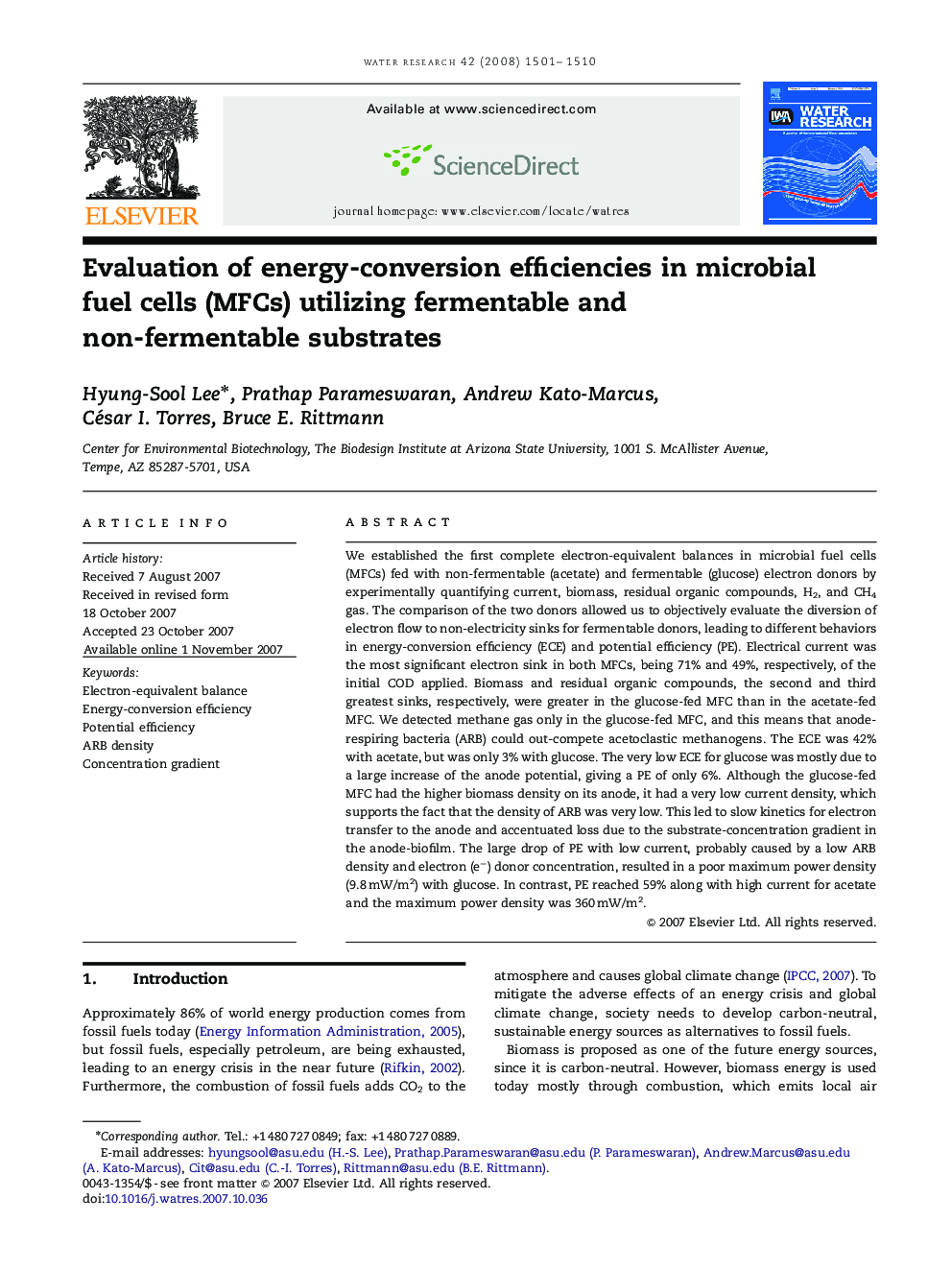| کد مقاله | کد نشریه | سال انتشار | مقاله انگلیسی | نسخه تمام متن |
|---|---|---|---|---|
| 4485037 | 1623123 | 2008 | 10 صفحه PDF | دانلود رایگان |

We established the first complete electron-equivalent balances in microbial fuel cells (MFCs) fed with non-fermentable (acetate) and fermentable (glucose) electron donors by experimentally quantifying current, biomass, residual organic compounds, H2, and CH4 gas. The comparison of the two donors allowed us to objectively evaluate the diversion of electron flow to non-electricity sinks for fermentable donors, leading to different behaviors in energy-conversion efficiency (ECE) and potential efficiency (PE). Electrical current was the most significant electron sink in both MFCs, being 71% and 49%, respectively, of the initial COD applied. Biomass and residual organic compounds, the second and third greatest sinks, respectively, were greater in the glucose-fed MFC than in the acetate-fed MFC. We detected methane gas only in the glucose-fed MFC, and this means that anode-respiring bacteria (ARB) could out-compete acetoclastic methanogens. The ECE was 42% with acetate, but was only 3% with glucose. The very low ECE for glucose was mostly due to a large increase of the anode potential, giving a PE of only 6%. Although the glucose-fed MFC had the higher biomass density on its anode, it had a very low current density, which supports the fact that the density of ARB was very low. This led to slow kinetics for electron transfer to the anode and accentuated loss due to the substrate-concentration gradient in the anode-biofilm. The large drop of PE with low current, probably caused by a low ARB density and electron (e−) donor concentration, resulted in a poor maximum power density (9.8 mW/m2) with glucose. In contrast, PE reached 59% along with high current for acetate and the maximum power density was 360 mW/m2.
Journal: Water Research - Volume 42, Issues 6–7, March 2008, Pages 1501–1510